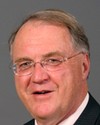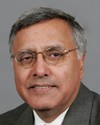Does the hon. member have unanimous consent?
House of Commons Hansard #149 of the 40th Parliament, 3rd Session. (The original version is on Parliament's site.) The word of the day was quebec.
House of Commons Hansard #149 of the 40th Parliament, 3rd Session. (The original version is on Parliament's site.) The word of the day was quebec.
PovertyPetitionsRoutine Proceedings
1:15 p.m.
NDP
PovertyPetitionsRoutine Proceedings
1:15 p.m.
Some hon. members
Agreed.
No.
PovertyPetitionsRoutine Proceedings
1:15 p.m.
Liberal

Jim Karygiannis Liberal Scarborough—Agincourt, ON
Madam Speaker, I rise on a point of order. I am seeking unanimous consent to move a motion that the House unanimously condemn what is happening in Bahrain by the government against its people and calls on all parties to move swiftly to resolve the difficulties and for democracy to return in Bahrain.
PovertyPetitionsRoutine Proceedings
1:15 p.m.
NDP

The Acting Speaker NDP Denise Savoie
Does the hon. member have the unanimous consent of the House to propose this motion?
PovertyPetitionsRoutine Proceedings
1:15 p.m.
Some hon. members
Agreed.
No.
Questions on the Order PaperRoutine Proceedings
March 25th, 2011 / 1:15 p.m.
Regina—Lumsden—Lake Centre Saskatchewan
Conservative

Tom Lukiwski ConservativeParliamentary Secretary to the Leader of the Government in the House of Commons
Madam Speaker, the following questions will be answered today: Nos. 924, 925, 926, 927, 928 and 933.
Question No. 924Questions on the Order PaperRoutine Proceedings
1:15 p.m.
Liberal

Bryon Wilfert Liberal Richmond Hill, ON
With regard to the withdrawal of Canadian Forces from Afghanistan: (a) what were the Department of National Defense's initial cost estimates, prior to November of 2010, for the removal of equipment and personnel from Afghanistan in spring-summer of 2011; (b) what additional costs are anticipated now that Canada has lost access to Camp Mirage in the United Arab Emirates; and (c) what funds have been reallocated within the department in order to cover these cost overruns?
Question No. 924Questions on the Order PaperRoutine Proceedings
1:15 p.m.
Central Nova Nova Scotia
Conservative

Peter MacKay ConservativeMinister of National Defence
Mr. Speaker, in response to (a), the $9.3 billion Afghanistan cost reported in the reports on plans and priorities includes incremental costs for the mission from 2001 to 2011 as well as close-out costs such as reconstitution, i.e., the costs arising from returning equipment to its pre-mission state, and redeployment once the mission ends.
In response to (b), the costs associated with the closure of Camp Mirage are one aspect of the greater context of Canada’s engagement in Afghanistan, and have yet to be finalized.
In response to (c), the source of funds remains to be determined.
Question No. 925Questions on the Order PaperRoutine Proceedings
1:15 p.m.
Liberal

Bryon Wilfert Liberal Richmond Hill, ON
With regard to the procurement of the Joint Strike Fighter: (a) since 2006, how many and which private sector consultants has the government hired in order to assess the feasibility and technical capabilities of the F-35; (b) how much were each of these consultants paid for their work; and (c) for how many billable hours did each consultant invoice the government?
Question No. 925Questions on the Order PaperRoutine Proceedings
1:15 p.m.
Central Nova Nova Scotia
Conservative

Peter MacKay ConservativeMinister of National Defence
Mr. Speaker, no private sector consultants have been hired to assess the feasibility and technical capabilities of the F-35.
Question No. 926Questions on the Order PaperRoutine Proceedings
1:15 p.m.
Liberal

Michael Savage Liberal Dartmouth—Cole Harbour, NS
With regard to possible tax evasion in Switzerland: (a) how many Canadians have been identified as having undeclared bank accounts in Switzerland; (b) what action, if any, has been taken by Canadian officials to recover unpaid taxes associated with Canadians' undeclared bank accounts in Switzerland; (c) how many identified Canadians have availed themselves of the Voluntary Disclosure Program (VDP) with the Canada Revenue Agency (CRA); (d) how many identified Canadian accounts have settled with the CRA; (e) how much money has the CRA assessed as a result of investigating these secret banks accounts in Switzerland (i) in unpaid taxes, (ii) in interest, (iii) in fines, (iv) in penalties; (f) how much of the money in (e) has been collected; (g) how many of the cases are under appeal; (h) how many cases remain open; (i) how many more cases does the CRA anticipate will be opened; (j) how many cases have been closed (i.e., the full amount of taxes, interest, fines and penalties have been collected); (k) how much money in (j) has been collected (i) in unpaid taxes, (ii) in interest, (iii) in fines, (iv) in penalties; (l) how many account holders in the cases have made partial payment; (m) of the partial payments made, what was the (i) largest amount, (ii) smallest amount, (iii) average amount; (n) how much does the CRA anticipate it has yet to collect in (i) taxes, (ii) interest, (iii) fines, (iv) penalties; (o) of the amounts of money contained in the Switzerland accounts declared or discovered by CRA, what was the (i) largest amount, (ii) smallest amount, (iii) average amount; (p) on what date was the CRA first made aware of the names of Canadians with accounts in Switzerland; (q) on what date did the CRA begin its investigation; (r) on what date did the first audit of an individual account holder begin; (s) how many of the identified Canadians with bank accounts in Switzerland (i) have had their account or accounts audited, (ii) have had their account or accounts reassessed, (iii) have been the subject of a compliance action; (t) how many of the identified Canadians with bank accounts in Switzerland (i) have not had their account or accounts audited, (ii) have not had their account or accounts reassessed, (iii) have not been the subject of a compliance action; (u) how many tax evasion charges were laid; and (v) has the government made any changes to the VDP in the past 24 months?
Question No. 926Questions on the Order PaperRoutine Proceedings
1:15 p.m.
Fredericton New Brunswick
Conservative

Keith Ashfield ConservativeMinister of National Revenue
Mr. Speaker, with respect to the above-noted question, what follows is the response from the Canada Revenue Agency, CRA.
The Canada Revenue Agency, CRA, is unable to provide a detailed response to the question, as the CRA does not capture the information in the manner requested. While the CRA does track specific non-compliance, any given audit project may have links to more than one country; therefore, information is not tracked by country.
Question No. 927Questions on the Order PaperRoutine Proceedings
1:15 p.m.
Ottawa West—Nepean Ontario
Conservative

John Baird ConservativeLeader of the Government in the House of Commons
Mr. Speaker, with regard to funds spent by Elections Canada, here are the responses.
With regard to part (a), during the period April 1, 2005 to January 31, 2011, Elections Canada spent approximately $3,028,486 on legal counsel and legal advice.
Of this amount, the office of the Commissioner of Canada Elections spent approximately $1,618,999 on legal counsel and legal advice for the enforcement of the Canada Elections Act, and approximately $1,409,487 was spent on legal counsel and legal advice for purposes other than enforcement of the Canada Elections Act.
Expenses incurred for legal services are of two general types: advisory services and litigation. Advisory services may include expenses related to opinions on specific subjects, review of documents or contracts, as well as the services of the broadcasting arbitrator.
Litigation services cover the gamut of cases in which the office of the Chief Electoral Officer may be involved, from electors who sue Elections Canada because they slipped while getting to the polling site to human rights cases, as well as others related to the interpretation of the Canada Elections Act.
With regard to part (b), of the amount shown in (a), approximately $1,255,561 was spent to address issues with regard to the Conservative Party of Canada.
With regard to part (c), there are currently 10 legal proceedings in which the office of the Chief Electoral Officer is involved in civil courts. This excludes routine applications to the courts for extensions of time to file returns. Note that an application has recently been filed in the Quebec Superior Court to join four of these legal proceedings in one. Should this application be successful, the number of civil proceedings will be reduced to seven.
One prosecution is ongoing at this time.
Question No. 928Questions on the Order PaperRoutine Proceedings
1:15 p.m.
NDP

Claude Gravelle NDP Nickel Belt, ON
With respect to FedNor: (a) how many new programs will be introduced for the Northern Ontario region in the fiscal year 2011-2012; (b) how many programs will sunset on March 31, 2011; and (c) how many major projects will be launched in 2011-2012 in cooperation with each municipality and local community?
Question No. 928Questions on the Order PaperRoutine Proceedings
1:15 p.m.
Parry Sound—Muskoka Ontario
Conservative

Tony Clement ConservativeMinister of Industry
Mr. Speaker, with respect to FedNor, here are the responses to the above-mentioned question.
With regard to part (a), the number of new programs that will be introduced for the northern Ontario region in the fiscal year 2011–12 is unknown at this time. In 2011–12, FedNor will continue to support economic development and business growth in northern Ontario through its northern Ontario development program, the community futures program and the economic development initiative for official language minority communities.
With regard to part (b), the community adjustment fund was one of the initiatives introduced in 2009 as part of the Government of Canada’s two-year economic action plan. FedNor was asked to administer this fund in Northern Ontario. This initiative is scheduled to sunset on March 31, 2011.
With regard to part (c), we are unable to forecast the number of major projects that will be launched in 2011–12. Applications to FedNor are received from across northern Ontario on a continuous intake system and undergo extensive due diligence to ensure that each project meets the published program guidelines and funding criteria. In 2011–12, FedNor’s contribution budget for northern Ontario is $46.4 million.
Question No. 933Questions on the Order PaperRoutine Proceedings
1:15 p.m.
Liberal

Ujjal Dosanjh Liberal Vancouver South, BC
With regard to the Federal Tobacco Control Strategy (FTCS): (a) has the government achieved its goal to reduce overall smoking prevalence from 19 percent in 2005 to 12 percent by 2011 and, if not, what are the reasons the government has failed to meet this target; (b) has the government established new goals and objectives for this strategy for the period following 2011 and, if so, what are they and, if not, why not; (c) does the government intend to revise or renew the FTCS and, if so, what steps has it taken to consult with the public and key stakeholders in this regard; and (d) does the government intend to continue to provide transfer payments in support of this strategy in 2011-2012 and, if so, (i) what is the total anticipated amount to be transferred in that fiscal year, (ii) has spending authority for these payments been obtained, (iii) has a process been put in place to solicit proposals for activities funded through transfer payments?
Question No. 933Questions on the Order PaperRoutine Proceedings
1:15 p.m.
Nunavut Nunavut
Conservative

Leona Aglukkaq ConservativeMinister of Health
Mr. Speaker, the federal tobacco control strategy, FTCS, has been successful in reducing smoking in Canada and preventing youth from starting to smoke. Canada is internationally recognized as a world leader in tobacco control. According to the World Health Organization, WHO, Canada has one of the lowest smoking rates in the world. In 2009, overall smoking prevalence in Canada was 18% and only 14% of Canadians were daily smokers. Data on 2010 and 2011 smoking prevalence are not yet available.
The current federal tobacco control strategy is 10 years old, and strategies to reach Canadians since then have evolved. In that context, Health Canada is examining the strategy to ensure a clear role for the federal government in this area of shared jurisdiction with the provinces and territories.
Given the pervasive and serious nature of the problem of tobacco use in our society, the Government is continually assessing new ways to maintain and enhance the effectiveness of its tobacco control measures.
One such initiative is the Cracking Down on Tobacco Marketing Aimed at Youth Act, which fully came into force on July 5, 2010. The act added further restrictions on tobacco advertising, as well as minimum packaging requirements for little cigars and blunt wraps, which ends the industry practice of selling these products in single units and “kiddy-packs”. The act also banned the use of certain additives, including flavours, excluding menthol, in cigarettes, little cigars and blunt wraps, as they contribute to making such products more appealing to youth.
On December 30, 2010, the Government of Canada announced proposed regulations to launch new, larger graphic health warning messages that will cover 75 percent of cigarette and little cigar packages in order to increase awareness of the health hazards associated with tobacco use and to further support smokers in their efforts to quit. These new health warning messages will be complemented by a multimedia social marketing campaign, including the use of social media tools, such as Facebook and Twitter, to reach and engage smokers. Subject to provincial and territorial agreement, the new labels will also include a pan-Canadian toll-free quitline number that will seamlessly link callers to provincial and territorial cessation support services.
The Government of Canada is committed to developing innovative approaches that effectively reduce smoking uptake among youth and help Canadian smokers to quit smoking. Health Canada will continue to seek innovative approaches to tobacco control and implement the necessary measures to reduce smoking rates and protect the health of Canadians.
The Government of Canada is examining the strategy to ensure a clear role for the federal government in this area of shared jurisdiction with the provinces and territories, including the use of grants and contribution funding.
Health Canada is pleased to have had the support of tobacco control stakeholders and the public health community during the passage of the Cracking Down on Tobacco Marketing Aimed at Youth Act and on the new proposed larger graphic health warning messages.
The Minister of Health indicated to provinces and territories that $3.5M of FTCS contribution funding would be available to support their cessation activities within the 2011-12 fiscal year. The government is examining the strategy to ensure a clear role for the federal government in this area of shared jurisdiction with the provinces and territories, including the use of grants and contribution funding.
Questions Passed as Orders for ReturnsRoutine Proceedings
1:15 p.m.
Regina—Lumsden—Lake Centre Saskatchewan
Conservative

Tom Lukiwski ConservativeParliamentary Secretary to the Leader of the Government in the House of Commons
Madam Speaker, if Questions Nos. 922, 923, 929, 930, 931, 932, 934, 935, 936, 937 and 938 could be made orders for returns, these returns would be tabled immediately.
Questions Passed as Orders for ReturnsRoutine Proceedings
1:15 p.m.
NDP
Questions Passed as Orders for ReturnsRoutine Proceedings
1:15 p.m.
Some hon. members
Agreed.
Question No. 922Questions Passed as Orders for ReturnsRoutine Proceedings
1:15 p.m.
Liberal

Kirsty Duncan Liberal Etobicoke North, ON
With respect to Canadian Forces (CF) members, reservists, and veterans and Alzheimer's disease and related dementias (ADRD), multiple sclerosis (MS), Parkinson's disease (PD), and acquired brain injury (ABI): (a) what, if any, research examines a possible relationship between military service and (i) ADRD, (ii) MS, (iii) PD, (iv) ABI and, if so, (iv) what is the summary of research findings related to each of (i), (ii), (iii), (iv) and any of their recommendations and, if not, (v) why not; (b) what, if any, research examines a possible relationship between operational stress injuries (OSIs), particularly post-traumatic stress disorder (PTSD), and ADRD and, if so, (i) what are the findings; (c) what, if any, research examines a possible relationship between OSIs, particularly PTSD, and initiation of MS or exacerbation of MS and, if so, what are the findings; (d) what, if any, research examines a possible relationship between military environmental exposures and (i) ADRD, (ii) PD; (e) what, if any, research examines a possible relationship between ABI and PTSD and between ABI and ADRD; (f) what are the Department of National Defense’s (DND) policies with respect to a CF member's or reservist's diagnosis for each of the four identified conditions, specifically what a diagnosis means in terms of (i) current employment, (ii) opportunity for advancement, (iii) honourable discharge, (iv) presumptive illness, (v) pension, (vi) benefits; (g) what happens when someone is diagnosed with each of the four conditions in the CF or reserves; (h) what are Veterans Affairs Canada’s (VAC) policies with respect to a veteran's diagnosis for each of the four identified conditions, specifically what a diagnosis means in terms of (i) any employment, (ii) opportunity for advancement, (iii) presumptive illness, (iv) pension, (v) benefits; (i) what are the benefits for which a CF member and reservist with (i) ADRD, (ii) MS, (iii) PD, (iv) ABI are eligible; (j) how are benefits in (i) calculated and what services and therapies, including but not limited to, aids and maintenance of the aids, disease modifying therapies, medical equipment, medical exams, occupational therapy, physical therapy, etc. for which members and reservists are eligible; (k) how do benefits for ADRD, MS, and PD differ from those available to members of the CF and reservists who suffer from a physical injury or an OSI; (l) what are the benefits for which a veteran with (i) ADRD, (ii) MS, (iii) PD (iv) ABI are eligible; (m) how are benefits in (l) calculated and what services and therapies, including but not limited to, aids and maintenance of aids, disease modifying therapies, medical equipment, medical exams, occupational therapy, physical therapy, etc., for which veterans are be eligible; (n) what, if any, studies of international efforts have been undertaken by DND and VAC regarding military service and each of ADRD, MS, PD, and ABI and, (i) if so, specify what studies, the chief findings, and any recommendations and, (ii) if not, why not; (o) how many members currently serving in the CF and reserves have received a diagnosis of ADRD, MS, PD, or ABI and how many veterans suffer from each of the identified conditions; (p) of the cases identified in (o), (i) how many have been awarded a service-related disability, (ii) what specific criteria were required to award a service-related disability, (iii) how was 'benefit of the doubt' ensured and what was the framework followed to ensure reliability and validity, (iv) how many were denied a service-related disability, and (v) how many people are appealing a decision; (q) how many CF members and reservists with (i) ADRD, (ii) MS, (iii) PD, (iv) ABI were required to leave the military during the last 5 years, 10 years and 20 years; (r) of those CF members and reservists in (q), what was the average time from diagnosis to honourable discharge, what opportunities might have existed for members and reservists to have kept working but in an altered capacity, were opportunities explored, and why or why not, and what was the average impact on pension and benefits; (s) what, if any, tracking was undertaken of the member's or reservist's (i) disease progression, (ii) work status, (iii) family life, (iv) mental health, etc., (v) what recommendations, if any, have been made or could be made to improve the quality of life of former military personnel; (t) how are each of ADRD, MS, PD, and ABI tracked among (i) CF, (ii) reservists, (iii) veterans; and (u) what long-term care is available, if necessary, for modern-day veterans suffering from each of the four identified conditions?
(Return tabled)
Question No. 923Questions Passed as Orders for ReturnsRoutine Proceedings
1:15 p.m.
Liberal

Shawn Murphy Liberal Charlottetown, PE
With regard to Veterans Affairs Canada (VAC): (a) how many persons were employed by VAC in Prince Edward Island for each of the fiscal years 2005-2006, 2006-2007, 2007-2008, 2008-2009, 2009-2010, broken down by (i) full-time employees, (ii) part-time employees, (iii) term contract employees, (iv) student contract employees; and (b) what was the total remuneration for VAC employees in Prince Edward Island for the same periods in (a)?
(Return tabled)